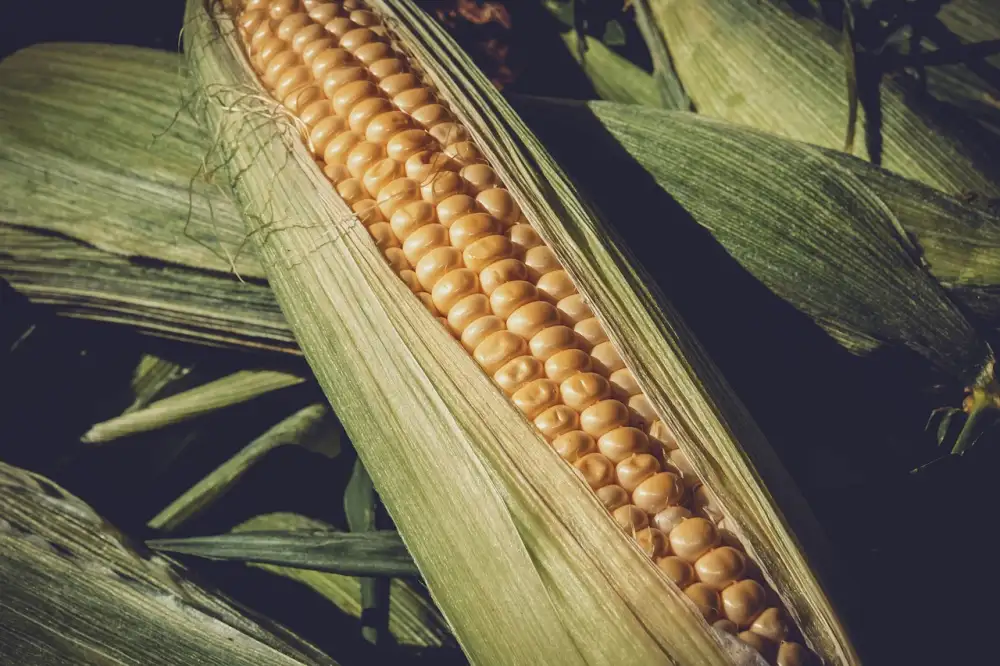Exploring the Curious Phenomenon of Eating Corn Starch: Unveiling the Health Implications

- Understanding pica and its impact on health
- The potential risks and dangers of consuming corn starch
- Exploring the nutritional value of corn starch
- Alternative solutions for managing pica cravings
- Seeking professional help for pica and its underlying causes
- Tips for promoting a healthy diet and lifestyle to overcome pica
Corn starch, a common ingredient found in many food products, has recently gained attention for its peculiar consumption by some individuals. This phenomenon, known as pica, involves the persistent craving and ingestion of non-food substances. While pica can manifest in various forms, such as eating dirt or ice, the consumption of corn starch has become increasingly prevalent. In this article, we will delve into the curious connection between eating corn starch and pica, shedding light on its potential health implications.
Understanding pica and its impact on health
Pica is a disorder characterized by the persistent craving and consumption of non-food substances, such as corn starch. This condition is often associated with nutritional deficiencies, particularly iron and zinc. Prolonged consumption of non-food items can lead to serious health implications, including gastrointestinal blockages, dental damage, and nutrient imbalances. It is crucial to understand the impact of pica on overall health in order to address this curious phenomenon effectively.
The potential risks and dangers of consuming corn starch
Consuming corn starch may seem harmless, but it is important to be aware of the potential risks and dangers associated with this behavior. One of the main concerns is the risk of nutrient deficiencies. Corn starch lacks essential vitamins and minerals that our bodies need for optimal functioning. Continued consumption of corn starch can lead to imbalances in nutrient levels, which can have detrimental effects on overall health. Additionally, eating excessive amounts of corn starch can contribute to weight gain and increase the risk of developing conditions such as diabetes and heart disease. It is crucial to understand these risks and make informed choices about our dietary habits.
Exploring the nutritional value of corn starch
Corn starch is a popular ingredient used in cooking and baking, but what about its nutritional value? Surprisingly, corn starch doesn't offer much in terms of nutrients. It is primarily composed of carbohydrates and contains very little protein, fat, vitamins, or minerals. While it may provide a quick source of energy, relying on corn starch as a dietary staple can lead to nutrient deficiencies. It's important to incorporate a variety of nutrient-rich foods into your diet to ensure you're getting all the essential nutrients your body needs.
Alternative solutions for managing pica cravings
When it comes to managing pica cravings, there are alternative solutions that can help individuals overcome the urge to consume non-food items like corn starch. One approach is to identify and address any underlying nutritional deficiencies that may be contributing to the cravings. This can be done through a balanced diet that includes a variety of nutrient-rich foods such as fruits, vegetables, lean proteins, and whole grains.
Another strategy is to find healthier substitutes for the desired texture or sensation. For example, if the craving is for something crunchy, opting for raw vegetables or nuts can provide a satisfying alternative. If the craving is specifically for corn starch, seeking out foods with similar textures like tapioca pearls or rice flour-based products may help satisfy the craving in a safer way.
Engaging in activities that distract from the cravings can also be effective. Finding hobbies or engaging in physical exercise can redirect focus away from the desire to consume non-food items. Additionally, practicing stress management techniques such as deep breathing exercises or meditation can help alleviate anxiety or emotional triggers that may contribute to pica cravings.
It is important to note that these alternative solutions should be implemented alongside professional guidance and support. Consulting with a healthcare provider or registered dietitian can provide personalized recommendations and ensure that any underlying health conditions are properly addressed.
By adopting these alternative solutions and seeking professional assistance, individuals struggling with pica cravings can work towards managing their urges in a healthier way. Remember, nurturing a balanced approach to food consumption is key to maintaining overall well-being and promoting a healthy lifestyle.
Seeking professional help for pica and its underlying causes
Seeking professional help is crucial for individuals experiencing pica and its underlying causes. Consulting a healthcare provider, such as a doctor or registered dietitian, can provide valuable insights and guidance. These professionals can conduct thorough assessments to determine the root causes of pica and develop personalized treatment plans. They may recommend therapy, counseling, or medication to address any underlying mental health issues or deficiencies that contribute to pica. Remember, seeking professional help is an important step towards understanding and managing this condition effectively.
Tips for promoting a healthy diet and lifestyle to overcome pica
To promote a healthy diet and lifestyle and overcome pica, it is important to take certain steps. Firstly, ensure that your meals are well-balanced and include a variety of nutrients. Incorporate foods rich in iron, calcium, and other essential vitamins and minerals to meet your body's nutritional needs. Secondly, practice mindful eating by paying attention to hunger cues and eating slowly. This can help prevent overeating or consuming non-nutritive substances like corn starch. Lastly, engage in regular physical activity to maintain overall well-being and reduce cravings. Remember, adopting a balanced approach to food consumption is key to overcoming pica and achieving optimal health.
In conclusion, it is important to nurture a balanced approach to food consumption. While the phenomenon of eating corn starch may be intriguing, it is crucial to understand the potential risks and dangers associated with it. Instead of indulging in unhealthy cravings, focus on maintaining a nutritious diet that includes a variety of fruits, vegetables, whole grains, and lean proteins. Seek professional help if you are struggling with pica or underlying issues. By promoting a healthy lifestyle and seeking support when needed, we can ensure our overall well-being and enjoy food in a safe and nourishing way.
Published: 01. 01. 2024
Category: Health



